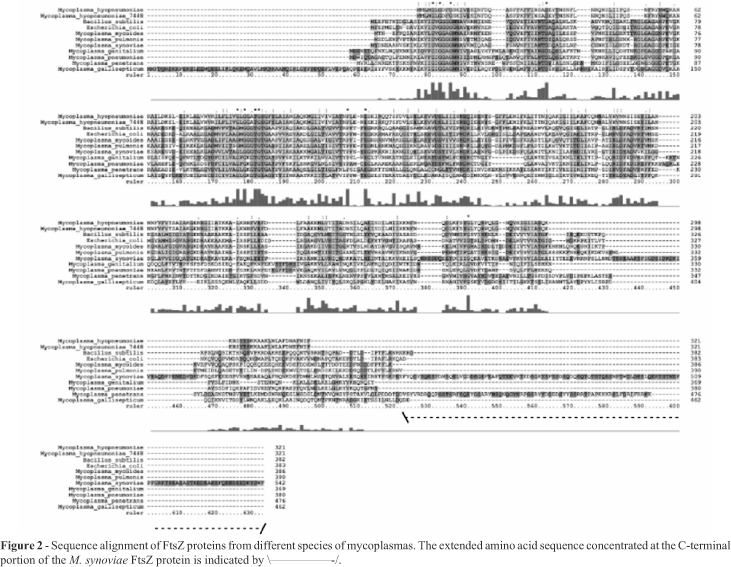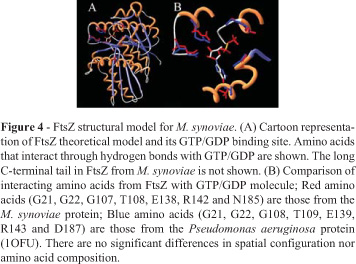Bacterial cell division has been studied mainly in model systems such as Escherichia coli and Bacillus subtilis, where it is described as a complex process with the participation of a group of proteins which assemble into a multiprotein complex called the septal ring. Mycoplasmas are cell wall-less bacteria presenting a reduced genome. Thus, it was important to compare their genomes to analyze putative genes involved in cell division processes. The division and cell wall (dcw) cluster, which in E. coli and B. subtilis is composed of 16 and 17 genes, respectively, is represented by only three to four genes in mycoplasmas. Even the most conserved protein, FtsZ, is not present in all mycoplasma genomes analyzed so far. A model for the FtsZ protein from Mycoplasma hyopneumoniae and Mycoplasma synoviae has been constructed. The conserved residues, essential for GTP/GDP binding, are present in FtsZ from both species. A strong conservation of hydrophobic amino acid patterns is observed, and is probably necessary for the structural stability of the protein when active. M. synoviae FtsZ presents an extended amino acid sequence at the C-terminal portion of the protein, which may participate in interactions with other still unknown proteins crucial for the cell division process.
cell division; Mycoplasma spp; genomes





